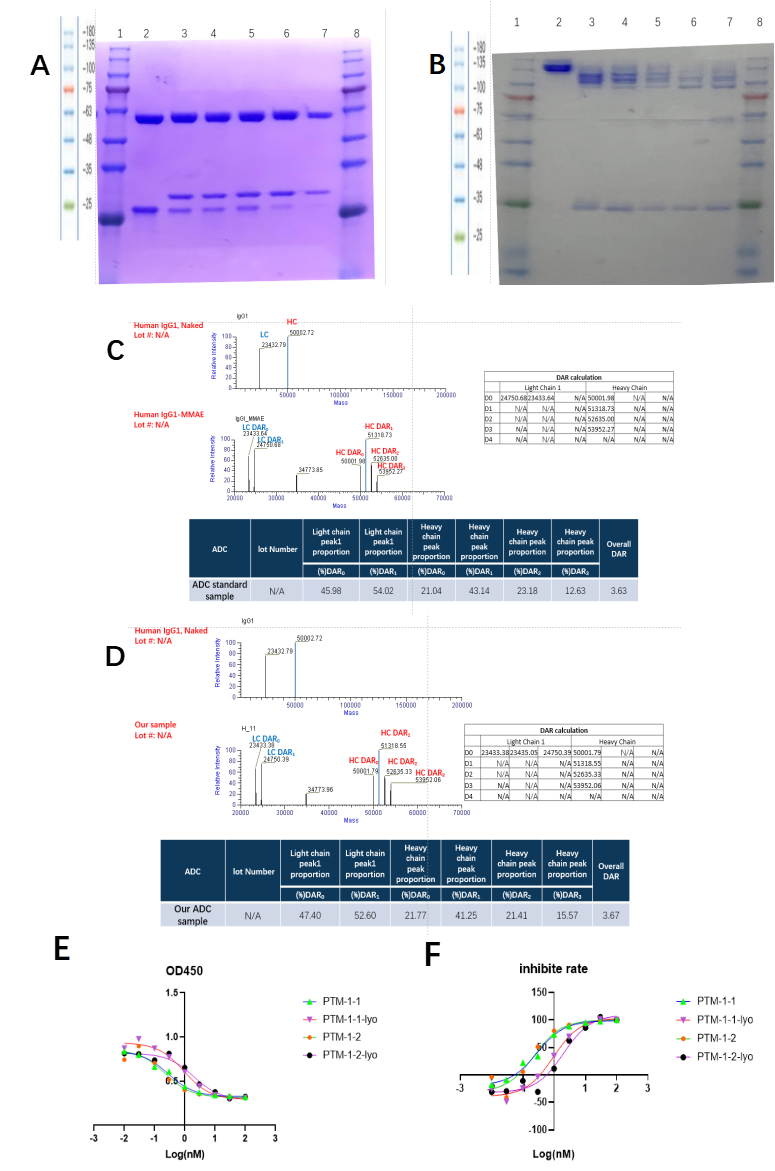Pre-made Brentuximab benchmark antibody ( Whole mAb ADC, anti-TNFRSF8 therapeutic antibody, Anti-CD30/Ki-1/D1S166E Antibody) for drug discovery and mechanism of action (MOA) research
Cat No.: GMP-Bios-ab-080
Pre-Made Brentuximab biosimilar, Whole mAb ADC, Anti-TNFRSF8 Antibody: Anti-CD30/Ki-1/D1S166E
therapeutic antibody is a biosimilar expressed by mammalian cell line as a benchmark reference
therapeutic antibody for biological drug disovery items including cell culture, assay
development, animal model development, PK/PD model development (Pharmacokinetics &
Pharmacodynamic) and mechanism of action (MOA) research.
Brentuximab vedotin (INN; trade
name Adcetris) is an antibody-drug conjugate medication used to treat relapsed or refractory
Hodgkin lymphoma (HL) and systemic anaplastic large cell lymphoma (ALCL), a type of T cell
non-Hodgkin lymphoma. It selectively targets tumor cells expressing the CD30 antigen, a defining
marker of Hodgkin lymphoma and ALCL. The drug is being jointly marketed by Millennium
Pharmaceuticals outside the US and by Seattle Genetics in the US.
Order information
* GeneMedi provides NON-PROFIT PRICE to support Academic research. Please click inquiry for product quotation. → Inquiry
| Catalog No. | Package | Price(In USD) | Qty (Quantity) | Sum(In USD) |
|---|---|---|---|---|
| GMP-Bios-ab-080-1mg | 1mg | 4635 | ||
| GMP-Bios-ab-080-10mg | 10mg | Inquiry | ||
| GMP-Bios-ab-080-100mg | 100mg | Inquiry | ||
| GMP-Bios-ab-080-xmg | ≥100mg | Inquiry | ||
| Shipping Cost: | 760.00 | |||
| Total: | ||||
Description
| Products Name (INN Index) | Pre-Made Brentuximab biosimilar, Whole mAb ADC, Anti-TNFRSF8 Antibody: Anti-CD30/Ki-1/D1S166E therapeutic antibody |
| INN Name | Brentuximab |
| Target | TNFRSF8 |
| Format | Whole mAb ADC |
| Derivation | |
| Species Reactivity | Human |
| CH1 Isotype | IgG1 |
| VD LC | Kappa |
| Highest_Clin_Trial (Jan '20) | Approved |
| Est. Status | Active |
| 100% SI Structure | None |
| 99% SI Structure | None |
| 95-98% SI Structure | None |
| Year Proposed | 2010 |
| Year Recommended | 2011 |
| Companies | Bristol-Myers Squibb;Celgene Corporation;Dana-Farber Cancer Institute;Fondazione Italiana Linfomi;Fox Chase Cancer Center;Immune Tolerance Network;Lymphoma Academic Research Organisation;Massachusetts General Hospital;National Cancer Institute (USA);National Institute of Allergy and Infectious Diseases;Seattle Genetics;Stanford University;Takeda;Takeda Oncology;UNC Lineberger Comprehensive Cancer Center;Washington University School of Medicine |
| Conditions Approved | Anaplastic large cell lymphoma;Cutaneous T-cell lymphoma;Hodgkin's disease;Mycosis fungoides;T-cell lymphoma |
| Conditions Active | Adult T-cell leukaemia-lymphoma;Diffuse large B cell lymphoma;Germ cell and embryonal neoplasms;Mastocytosis;Mesothelioma;Non-Hodgkin's lymphoma;Peripheral T-cell lymphoma;Sezary syndrome;Diffuse scleroderma |
| Conditions Discontinued | Graft-versus-host disease;Leukaemia;Multiple myeloma;Solid tumours;Systemic lupus erythematosus |
| Development Tech | na |
Case study
| Antibody | Payload | QC |
|---|---|---|
| Ab-001 | VCMMAE | SDS-PAGE(reducing and non-reducing) |
| Human IgG1 Control | DAR | |
| Ab-002 | Cytotoxity assay |
First, we used a higher dose of reducing agent (TCEP) and small toxic molecule (vcmmae) to ensure
the success of coupling. SDS-PAGE (reducing DTT & non reducing DTT) results showed that we
successfully linked MMAE to the antibody. Here you are the conjugate manufacturing.
1. human IgG1-ADC: SDS-PAGE (reducing) and SDS-PAGE (non-reducing)
2. DAR detect
In this batch, we selected 5.4 equivalent TCEP and 10.8 equivalent VCMMAE groups for DAR
detection. The DAR of our sample is almost the same as that of the standard sample, but the
integrity of the antibody result is not as good as that of the standard sample.
3. cytotoxity assay
At next step, we did cytotoxity assay to observe the toxic effect of ADC on 293 cells. At the
same time, considering the storage and transportation of ADC, we lyophilized ADC and compared
the effect of non-lyophilized on ADC cytotoxicity.
Obviously, compared with the blank group, ADC had a significant inhibitory effect on the growth
of 293 cells. Moreover, lyophilized can reduce the inhibition of ADC on cell growth.
The results show that when the equivalent of reducing agent TCEP is 0.4 and 1.5, the results do
not have regularity, which may be caused by the limited opening of disulfide bond and the
limited coupling of small molecules. However, when the equivalent of TCEP is 3, the results can
match the previous PTM-1-ADC (5.4t5.4v & 5.4t10.8). We also deal 293-ko cell line with
PTM-1-ADC, obviously, there is no regular relationship between cell death and ADC dose.

Figure. QC and functional verification of ADC(human IgG1-MMAE).
Figure C and figure D: LC-MS to detect the DAR(drug-to-antibody ratio) of ADC. Figure C is positive control and figure D is the ADC made by ourselves. Both are human IgG1-MMAE.
Figure C and figure D: LC-MS to detect the DAR(drug-to-antibody ratio) of ADC. Figure C is positive control and figure D is the ADC made by ourselves. Both are human IgG1-MMAE.
Figure E and figure F: ADC cytotoxicity assay.








